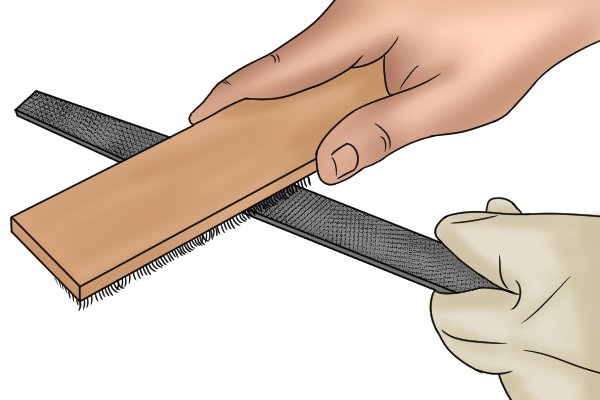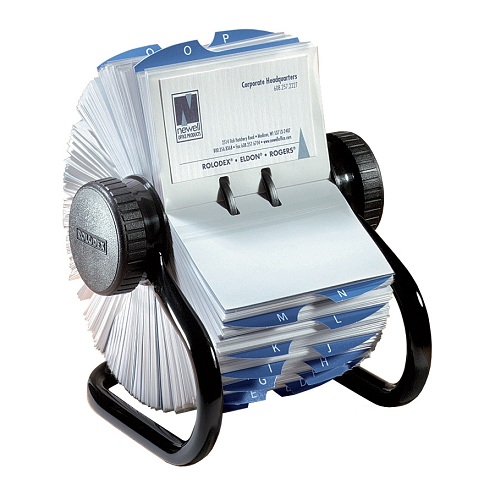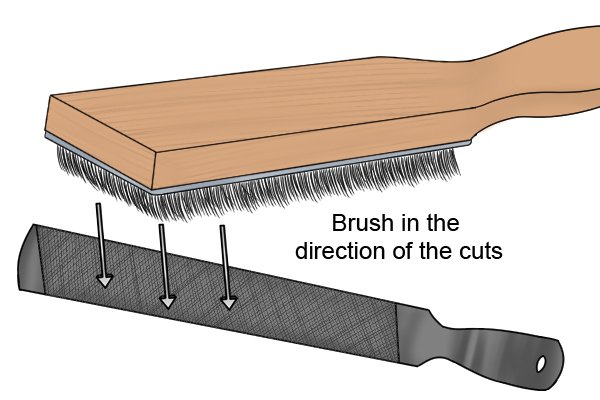

Examples of special-purpose files include wood rasps, foam files and body filler files. These are file-like tools that have been developed over time for specific applications or materials. They are suited to sharpening saw blades and dressing tool edges, especially where a finer, sharper edge or smoother surface finish is desired. Saw files are usually single cut to deliver a smoother finish. These files are used in numerous applications and on most metals and are available in a variety of profiles and cuts. Generally, machinist’s files are double cut for rapid, maximum stock removal. Check out our file identification chart to see how many different files are available. Remember, don’t feel limited by the listed applications-use whatever file works for your project. Within these categories, there are standard variations, each with a particular design. Examples include flat, round, square, tapered, etc.Īlthough there are numerous sizes, shapes and types, files generally fall into one of the categories listed below. Hand files are also categorized by profile, that is the shape of the file. Single cut files (top) have one set of teeth. Some files are single cut on one face and double cut-or even smooth-on the other. A single cut file has one set of teeth a double cut file has two. With teeth that extend to the edge and narrow points for working in tight areas, Swiss Pattern files are ideal for detailed work, often used by jewellers, watchmakers, model makers, and tool and die makers.Ī file’s face can be single cut or double cut. Swiss Pattern files are usually between 3″ and 6″ long, and are available in a wide range of fine cuts. Made to exacting measurements, these files are smaller and finer than American Pattern files. Swiss Pattern files, on the other hand, are available in seven cuts, ranging in coarseness from ØØ to No. The relationship between the grades of coarseness for each length remains the same. Overall, the finest would be a 4″ Smooth file and the coarsest would be a 16″ Bastard file. This is because shorter files are generally used for finer work. For example a 6″ Bastard Cut is a lot finer than a 12″ Bastard Cut. The length of a file also affects the coarseness, regardless of the cut.

Most hand files are classified as Swiss Pattern or American Pattern.Īmerican Pattern files are available in three grades of cut: Bastard, Second Cut and Smooth. The tang or handle is not included when determining the length. Yet the point is, in fact, the end you point at the work.Ī file’s length is measured from the base of its heel to the end of its point. Strangely enough, the point is often quite square and rarely pointed. Depending on its shape or profile, a file can have flat edges, tapered edges or round edges. Similarly, the edges of a file can be smooth or have teeth. Some files have more than two bellies or faces, and can feature different tooth patterns on each.

The next section is the belly or face, where all the cutting action happens. This is where the body of the file begins. Others, like a farmer’s file, have wide, flat tangs that serve as handles. At the base of the tang is the heel. Some files have built-in handles moulded over the tang. It’s where you attach a wooden or plastic handle. Looking for a new hand file? KMS Tools has a great selection. Check out this file identification chart or keep reading to learn more about hand files Today, there are dozens of manufacturers producing hand files for both general and specific applications. Through the later work of men such as Bernot, Grobet, Nicholson, Whipple and Weed, machine-made files developed to the point where they were better than those produced by hand. At that time, files were made of soft iron and heated to harden or carburize the teeth. While da Vinci’s design was unsuccessful, Chopitel produced machine-cut files in France in the 18th century. Leonardo da Vinci was among the first to design a machine to manufacture files.

Records show that ancient civilizations used handmade metal files and stone rasps. The lowly hand file, relied upon since the Stone Age, has been the tool of choice to smooth, hone, clean and deburr all kinds of materials for thousands of years.


 0 kommentar(er)
0 kommentar(er)
